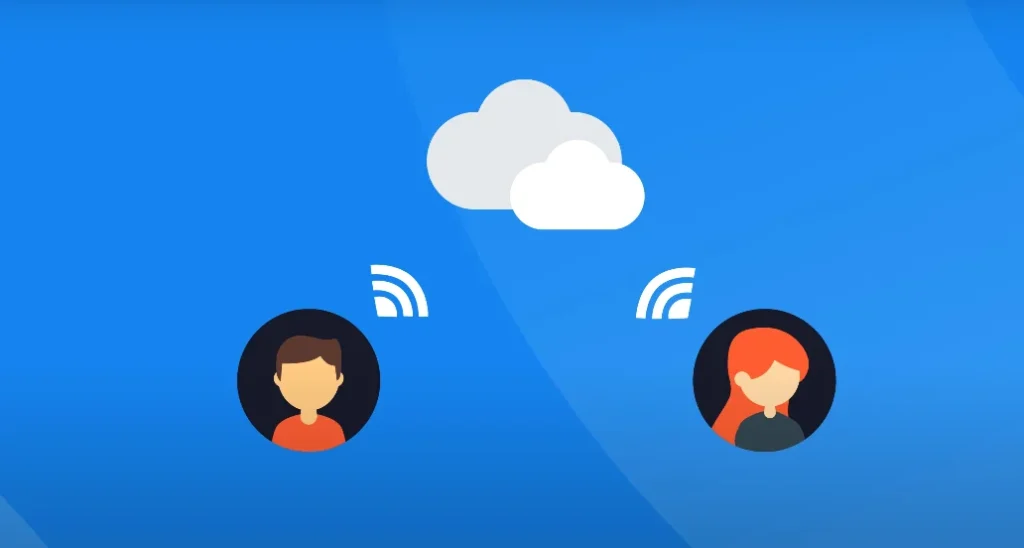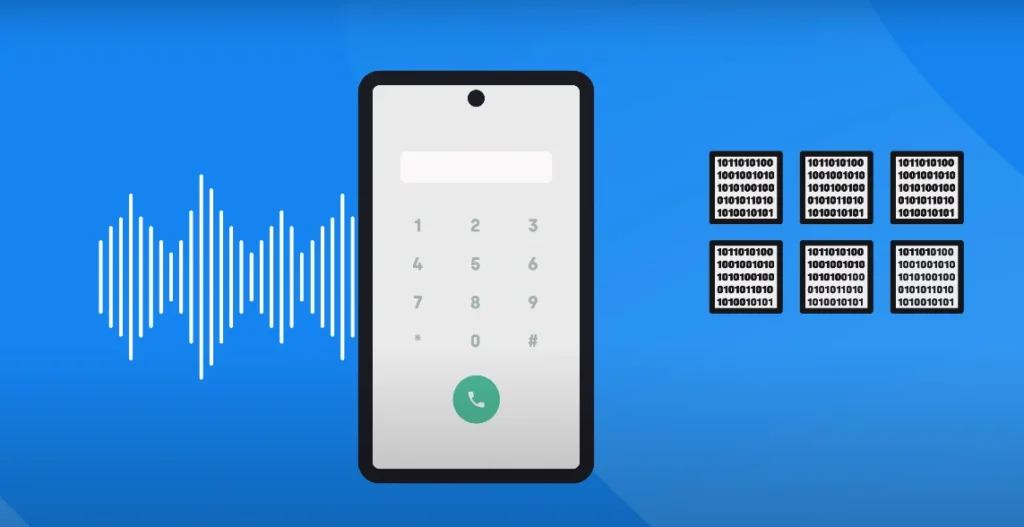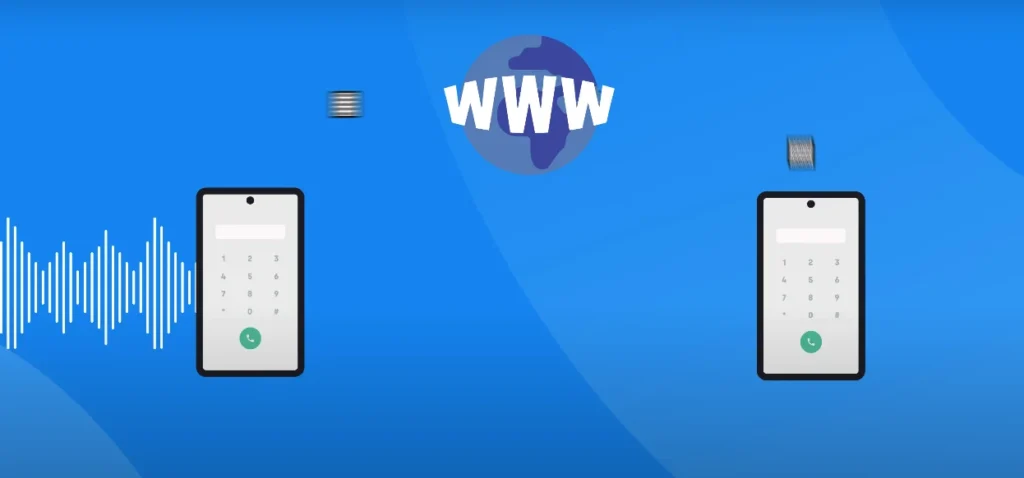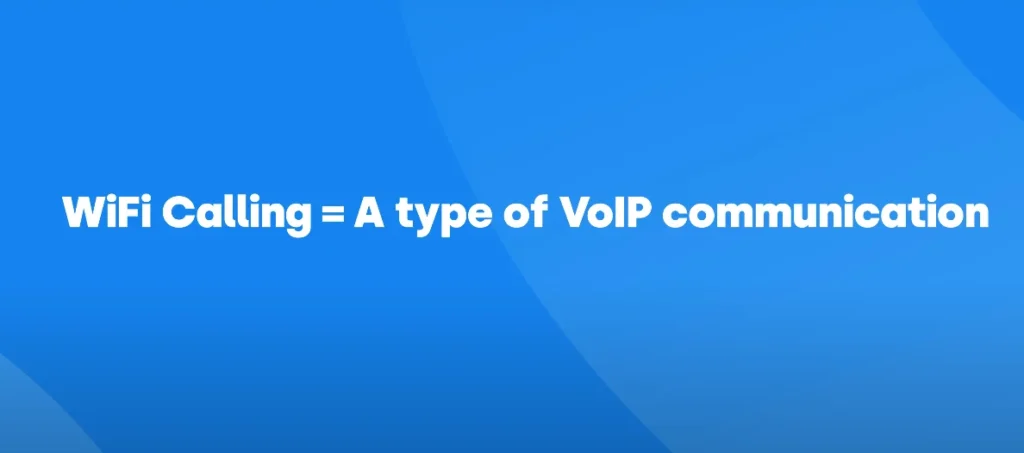Wi-Fi Calling enables voice calls over a wireless internet connection. It bypasses the need for a cellular network.
Imagine stepping into your home or office where cellular signals often struggle to penetrate, and yet you’re able to make and receive calls seamlessly. Wi-Fi Calling turns that scenario into a reality. This feature, offered by many mobile carriers, allows your smartphone to use a Wi-Fi network to make and receive telephone calls, send and receive text messages, and more.
It’s an ideal solution for areas with poor cellular reception. With Wi-Fi Calling, your mobile experience becomes consistently robust, even in environments where conventional mobile coverage falls short. This technology is especially beneficial for people living in remote locations or in buildings made of materials that hinder cellular signals. Your device automatically switches to Wi-Fi Calling when the cellular signal is weak, ensuring your connectivity remains uninterrupted. It’s crucial to note that not all smartphones support this feature, and its availability depends on your carrier and the specific phone model you possess.
What Is Wi-fi Calling?
Wi-Fi calling enables voice calls over a wireless internet connection, bypassing the need for a cellular network. This feature allows seamless communication even in areas with poor cellular reception, using any Wi-Fi hotspot to facilitate the call.
In our ever-connected world, Wi-Fi calling has emerged as a game-changer. It’s a service that allows you to make and receive calls over a Wi-Fi network, bypassing the need for a traditional cellular connection. This technology is perfect for those who find themselves in areas with poor cell reception, as it utilizes high-speed internet to facilitate crystal-clear voice calls.
The Mechanism Behind Wi-fi Calling
- Utilizes Existing Wi-Fi Networks: Wi-Fi calling takes advantage of the wireless internet networks you already use to provide a different pathway for call transmission.
- Seamless Integration: Your phone automatically switches to Wi-Fi calling when cellular signals are weak or unavailable.
- No Additional Fees: Typically, service providers do not charge extra for using Wi-Fi to call or text, so it can also be a cost-effective option.
Benefits Of Wi-fi Calling
Opting for Wi-Fi calling comes with a plethora of advantages that extend beyond mere call connectivity. A few significant benefits include:
- Improved Indoor Coverage: Physical barriers that inhibit cellular signals do not affect Wi-Fi, providing better call quality indoors.
- Extended Battery Life: Using Wi-Fi for calls can reduce battery drain compared to cellular calls, as seeking signals often expends more energy.
- Ease of Use: There’s no need for a separate app; Wi-Fi calling is integrated into your phone’s dialer.
Getting Started With Wi-fi Calling
To begin using Wi-Fi calling, there’s no complex setup involved. Follow these simple steps to ensure you’re equipped to make calls, even when cell towers are out of reach:
- Check Your Phone Compatibility: Ensure that your phone supports Wi-Fi calling, as most modern smartphones do.
- Enable the Feature: Typically found under network settings, this function can be easily switched on with a tap.
- Connect to Wi-Fi: Make sure you’re connected to a stable Wi-Fi network for optimal performance.
By embracing Wi-Fi calling, you not only stay connected in tricky cell-signal spots, but you can also save on potential costs, and enjoy superior call quality. Its simplicity and effectiveness make it the perfect solution for today’s mobile communication needs.
OpenAI Revolution: Navigating the Future of AI
How Does Wi-fi Calling Work?
Wi-Fi Calling enables voice calls over an internet connection, bypassing traditional cellular networks. It seamlessly integrates with your phone’s dialer for convenient usage without additional apps.

Understanding The Basics Of Wi-fi Calling
Wi-Fi calling, a service that’s revolutionizing how we communicate, allows users to make and receive calls over a wireless internet connection. Unlike traditional cellular networks, it bypasses the need for strong cellular signals and can be a lifesaver in areas with poor network reception.
Let’s delve deeper into its working mechanism.
The Role Of Your Smartphone
- Smartphone compatibility: Not all smartphones support Wi-Fi calling, so it’s essential that your device is compatible with this feature.
- Settings activation: In order to use Wi-Fi calling, you must activate it in your phone’s settings. This is usually found under the “Phone” or “Connections” menu.
- Seamless transition: Modern smartphones are designed to switch between Wi-Fi and cellular networks. Calls will automatically transfer to Wi-Fi calling if the cellular signal is weak.
Behind The Scenes: Ip Multimedia Subsystem (ims)
Imagine a backstage crew, working to ensure the star performer shines. That’s the role of the IP Multimedia Subsystem (IMS) in Wi-Fi calling. It’s a core network technology that allows your phone to communicate using internet protocols over Wi-Fi. This technology integrates seamlessly with your carrier’s network, providing you with uninterrupted service whether you’re on Wi-Fi or cellular.
The Process Of Making A Wi-fi Call
- Signal conversion: Your voice is turned into digital data packets that can travel over the internet.
- Data routing: These packets are sent via your Wi-Fi network to your carrier, which then routes the call to the intended recipient.
- Call connection: The person on the other end receives your call as they would any other, with the process being invisible to them.
Advantages For The End-user
Wi-Fi calling is not just a nifty trick; it’s packed with benefits for users. Affordability is a key advantage, especially when contacting people overseas, as Wi-Fi calls to US numbers are typically free. There’s also the unparalleled convenience of being able to communicate even in locations with no cellular coverage—all you need is an accessible Wi-Fi network.
Stay connected, crystal-clear and cost-effective with Wi-Fi calling. As telecom technology continues to evolve, expect this feature to become a staple in our daily lives, keeping us connected in ways we once thought were unimaginable.
Does Wi-fi Calling Cost Money?
Wi-Fi calling typically doesn’t incur additional charges, as it uses your existing data plan. Service providers often include this feature free with most voice plans, making calls more accessible without extra costs.

Understanding Wi-fi Calling
Wi-Fi calling is a service that allows you to make and receive phone calls via a Wi-Fi network instead of using the traditional cellular network. It’s a nifty feature that seamlessly switches to Wi-Fi when cellular signals are weak, ensuring that you can stay connected in areas with poor mobile reception.
Discussing the cost of Wi-Fi calling can range from being absolutely free to potentially incurring additional charges. Let’s explore the various scenarios where costs may differ:
- Included in Your Plan:
Many cell phone carriers include Wi-Fi calling in their plans at no additional cost. This means you can make calls over Wi-Fi without worrying about extra fees.
- International Calls:
When calling internationally, charges can vary. Some carriers treat Wi-Fi calls to foreign countries as traditional calls, which may lead to international rates being applied.
- Traveling Abroad:
Using Wi-Fi calling to contact someone back in your home country is usually treated as a local call, often sparing you from roaming charges.
- Pay-As-You-Go:
For pay-as-you-go users, minutes used during Wi-Fi calling might be deducted from your balance, similar to standard calls.
How Can You Use Wi-fi Calling?
Using Wi-Fi calling is incredibly straightforward. Here’s how to get started:
- Compatibility Check:
Ensure your phone supports Wi-Fi calling, which is common in most modern smartphones.
- Carrier and Plan:
Verify whether your mobile carrier provides Wi-Fi calling services and if it’s included in your plan without extra charges.
- Settings Activation:
Activate Wi-Fi calling by going to your phone’s settings menu, finding the ‘Phone’ or ‘Connections’ options, and toggling on the Wi-Fi calling feature.
- Connection to Wi-Fi:
Connect to a stable Wi-Fi network, which will then allow you to dial as you usually would, with the call being placed over the network rather than the cellular connection.
By understanding the implications of hidden costs and how to activate the feature, you can make the most out of Wi-Fi calling, whether you’re at home, in the office, or even overseas.
Advantages Of Wi-fi Calling
Wi-Fi calling enhances connectivity, allowing seamless communication even in areas with poor cellular reception. It offers the convenience of using your phone number without incurring extra charges, ensuring that you stay connected wherever there’s Wi-Fi.

Enhanced Connectivity
Imagine being able to make a call from anywhere in the building, even if cellular reception is as elusive as a whisper in a windstorm. That’s the magic of Wi-Fi calling. It allows you to make and receive calls over a wireless internet connection, which often significantly improves the reliability in areas where mobile signals fear to tread.
Cost-effective Communication
- No additional charges: With Wi-Fi calling, your calls to US numbers, regardless of whether local or long-distance, typically don’t incur extra fees.
- International savings: When calling from abroad, Wi-Fi calling is often included at no additional charge, reducing the financial sting from international call rates.
Ease Of Use
There’s no need for a separate app or a new number to start using Wi-Fi calling. It’s a built-in feature that automatically activates when you’re connected to Wi-Fi, streamlining communication to a simple, familiar process. As user-friendly as it gets, the transition is seamless, with calls and messages handled the same way as cellular ones.
Consistent Call Quality
- Improved sound quality: Wi-Fi calling frequently offers superior audio clarity, making conversations sound crisper and clearer than traditional cellular calls.
- Fewer dropped calls: By relying on a Wi-Fi network, the stability and consistency of call quality are massively boosted, practically eliminating dropped calls in well-covered Wi-Fi zones.
Accessibility Everywhere
Whether you’re tucked away in a cozy basement cafe or in the embrace of a concrete-laden office skyscraper, Wi-Fi calling doesn’t shy away from delivering its promises. Wherever there’s a Wi-Fi signal, the power to connect is in your hands, empowering communication without the limitations imposed by physical barriers and geographical constraints.
No Special Requirements
The beauty of Wi-Fi calling lies in its simplicity. There’s no need for any fancy equipment or sophisticated technology. All that’s required is a compatible smartphone and an active Wi-Fi connection, and voilà, you’re set to dial away to your heart’s content.
It’s this delightful simplicity that propels Wi-Fi calling into the must-have features for any modern mobile user.
How Businesses Can Implement Wi-fi Calling
Businesses looking to adopt Wi-Fi calling need a robust wireless network and compatible devices. Seamless integration requires configuring a quality of service (QoS) to prioritize voice traffic, ensuring crystal-clear communication for teams and clientele alike.

Understanding Wi-fi Calling For Business
With the advent of seamless internet connectivity, Wi-Fi calling has become an invaluable feature for businesses looking to improve communication and reduce costs. Essentially, Wi-Fi calling allows users to make and receive calls over a wireless internet connection rather than relying on a traditional cellular network.
This technology not only enables clear voice calls in areas with poor cellular reception but also presents potential savings on telecommunication expenses.
Steps To Implement Wi-fi Calling In Your Business
Before implementing Wi-Fi calling, there are certain steps a business should follow to ensure a smooth transition:
- Assess your current infrastructure: Determine if your existing Wi-Fi network can support high-quality voice calls and handle the additional traffic.
- Choose compatible devices: Ensure that the smartphones and devices used by your team support Wi-Fi calling functionality.
- Educate your team: Provide training and resources so employees understand how to use Wi-Fi calling features on their devices.
- Monitor the quality of service: Regularly check the call quality and connectivity to address any issues promptly.
Essential Equipment For Wi-fi Calling
To implement Wi-Fi calling successfully, businesses need to invest in quality equipment:
- A robust Wi-Fi router: This is critical for handling voice traffic without dropping calls or degrading call quality.
- Network management tools: These help in monitoring network usage and ensuring priority is given to voice calls to maintain quality.
- Power backups: To prevent outages, ensure you have uninterruptible power supplies for your network equipment.
Wi-fi Calling Plan Considerations
When choosing a Wi-Fi calling plan, there are factors that a business must consider:
- Evaluate plan pricing: Look for cost-effective plans that meet your call volume without unnecessary expenses.
- Check international calling features: If your business requires international calling, select a plan that includes this service without exorbitant fees.
- Flexibility and scalability: Choose a plan that can grow with your business and adjust to fluctuating needs.
Benefits Of Wi-fi Calling For Businesses
Wi-Fi calling can revolutionize the way businesses communicate by offering numerous advantages:
- Improved call reliability in areas with poor cellular reception.
- Potential cost savings on mobile phone bills, especially regarding international calls.
- Enhanced employee mobility, allowing workers to make calls without the constraints of traditional phone systems.
Avoiding Common Pitfalls
Even with its advantages, businesses should be aware of possible challenges:
- Security concerns: To maintain call privacy, ensure your Wi-Fi network is secure and employs the latest encryption standards.
- Network dependency: Since Wi-Fi calling relies on an internet connection, an unstable connection can directly affect call quality.
By addressing these considerations and leveraging robust technology, businesses can integrate Wi-Fi calling into their communications strategy effectively, ensuring seamless internal and external communications while potentially reducing operational costs.
Challenges With Wi-fi Calling
Wi-Fi calling faces obstacles such as variable internet speeds and network congestion, leading to poor call quality. Connectivity issues also arise with weak wireless signals, causing disruptions during calls.

Navigating the complexities of modern technology often leads to the discovery of innovative conveniences like Wi-Fi calling. This feature allows users to make voice calls through a Wi-Fi network, bypassing the need for a traditional cell signal. While there are undeniable benefits, several challenges can dampen the user experience.
Connection Stability And Quality
Wi-Fi calling hinges on the strength and reliability of your Wi-Fi connection. Here’s what can go wrong:
- Weak Signal: Overly distant or obstructed routers can result in a weak Wi-Fi signal, causing dropped calls and poor call quality.
- Network Congestion: In a Wi-Fi crowded space, your call may compete for bandwidth, leading to latency or even disconnection.
- Router Quality: Older or lower-quality routers might struggle to provide the consistent high-speed internet required for seamless Wi-Fi calling.
Compatibility And Accessibility
Not all devices and networks embrace Wi-Fi calling equally. This section delineates issues that might arise:
- Device Limitations: Some older smartphones don’t support Wi-Fi calling, so users may need to upgrade their hardware.
- Carrier Restrictions: Some mobile carriers limit or do not support Wi-Fi calling, especially on certain plans or prepaid services.
- International Constraints: Traveling abroad can present hurdles as Wi-Fi calling features may not be accessible or could incur additional charges.
Security Concerns
Security is pivotal, and with Wi-Fi calling, new vulnerabilities come to light:
- Unsecured Networks: Public Wi-Fi networks may not be secure, potentially exposing your calls to eavesdropping or data theft.
- Encryption Variance: Not all networks employ robust encryption standards, making calls susceptible to interception.
Emergency Services Limitations
Wi-Fi calling might have hiccups when reaching out for help:
- Location Accuracy: Emergency services may find it challenging to pinpoint your exact location when you dial emergency numbers using Wi-Fi calling.
- Emergency Number Restrictions: Depending on your location, some Wi-Fi networks may not permit calls to emergency services.
Embracing advancements like Wi-Fi calling signifies stepping into a territory filled with promise and potential obstacles. By understanding these challenges, users can better navigate the nuances of Wi-Fi calling, ensuring they remain connected in the digital age.
Wi-fi Calling Problems Solutions
Experiencing issues with WiFi Calling? Troubleshoot with ease by checking network stability and ensuring your device’s software is up to date. For persistent problems, reset network settings or contact your carrier for support, ensuring clear, uninterrupted calls over a wireless internet connection.

Understanding Wi-fi Calling Issues
Before delving into solutions, it’s crucial to recognize the types of problems that might occur with Wi-Fi calling. From dropped calls to poor call quality, these issues can significantly disrupt communication. Various factors contribute to these problems, such as Wi-Fi signal strength, network congestion, and compatibility of devices.
Solving Connectivity Hiccups
- Check your Wi-Fi speed and strength: Verify if your internet connection is stable and fast enough for Wi-Fi calling. A weak signal can be the main culprit for poor call quality.
- Restart your router and device: This classic troubleshooting step can resolve minor glitches affecting the Wi-Fi network and your phone’s connectivity.
Wi-Fi calling requires a solid internet connection to function flawlessly. If you’re facing connectivity issues, consider these solutions to ensure a seamless experience.
Enhancing Call Quality
- Disable other devices on the network: Minimize bandwidth competition by turning off the Wi-Fi on gadgets that aren’t in use.
- Update your device firmware: Manufacturers often release updates that can improve functionality, including Wi-Fi calling features.
Poor call quality can be a significant hindrance while using Wi-Fi calling. By taking steps to optimize your network, you can vastly improve your call experience.
Addressing Compatibility And Setup Errors
Sometimes, difficulties stem from compatibility issues or incorrect setup:
- Confirm device compatibility: Make sure your device supports Wi-Fi calling and that it’s enabled in your phone settings.
- Review your carrier’s requirements: Check with your carrier for any specific setup steps or requirements to use Wi-Fi calling effectively.
Ensuring that your device and network are fully compatible and correctly configured is essential to utilize Wi-Fi calling without a hitch.
Best Practices For Effective Wi-fi Calling
Optimize your Wi-Fi calling experience by ensuring a strong, stable network connection. Select a quiet location to minimize background noise and enhance call clarity, and always keep your device’s software updated for the best performance.
We’ve all been there, struggling with poor cell reception, desperately trying to make or receive a call. Enter Wi-Fi calling—a game changer for anyone who’s ever experienced spotty cellular service. Wi-Fi calling utilizes your internet connection to make phone calls crystal clear, but to get the most out of it, you need to adhere to some best practices.
Ensure A Strong Wi-fi Connection
Before delving into the world of Wi-Fi calling, the significance of a robust Wi-Fi network can’t be overstated. Weak or unstable Wi-Fi signals lead to poor call quality and dropped calls. To sidestep these issues:
- Check your router: Make sure your router firmware is up-to-date and properly positioned in your home for optimal coverage.
- Bandwidth check: Verify that your internet plan provides sufficient bandwidth to support high-quality Wi-Fi calls alongside other online activities.
Limit Bandwidth-heavy Applications
To maintain the clarity of your Wi-Fi calls, be mindful of the bandwidth consumed by other applications. Streaming services, online gaming, and large downloads can impede your call quality. Here are steps to keep in mind:
- Pause downloads: Before making a Wi-Fi call, pause any ongoing downloads or updates on your devices.
- Monitor network usage: Keep tabs on devices connected to your network and the activities they’re engaging in which could affect your call quality.
Upgrade To A Better Wi-fi Standard
The type of Wi-Fi technology your router uses can significantly affect call quality:
- Wi-Fi 5 or 6: Opting for routers with Wi-Fi 5 (802.11ac) or Wi-Fi 6 (802.11ax) standards gives you a speedier, more reliable connection, ensuring smoother calls.
- Device compatibility: Confirm that your smartphone is compatible with the Wi-Fi standard of your router for the best experience.
Optimize Your Device Settings
Optimizing your device settings can also improve your Wi-Fi calling experience:
- Update your phone: Keeping your smartphone’s operating system updated ensures you have the latest Wi-Fi calling improvements.
- Enable Wi-Fi calling features: Delve into your phone’s settings to ensure Wi-Fi calling is enabled and configured correctly.
Use Quality Of Service (qos) Settings
Your router’s QoS settings play a pivotal role in prioritizing Wi-Fi calling over other internet traffic. By adjusting these settings:
- Prioritize voice calls: This ensures your Wi-Fi calls take precedence over other internet activities.
- Configure QoS: Navigate to your router’s settings to set QoS options that favor voice traffic for uninterrupted call quality.
Seamless communication is a must in the modern world. These best practices outline how Wi-Fi calling can be a reliable alternative to traditional cellular calling, provided that conditions are optimized. Keeping these tips in mind, you can make the most of the technology available to stay connected with crystal clear voice calls, anytime and anywhere.
How To Turn On Wi-fi Calling?
Activate Wi-Fi calling on your smartphone by navigating to the settings menu and selecting the ‘Phone’ or ‘Connections’ option. Then, tap ‘Wi-Fi Calling’ and switch it on to enhance your call quality without relying on cellular networks.

Understanding Wi-fi Calling
Staying connected has never been more critical in our fast-paced digital world. Wi-Fi calling is a game-changer, providing clarity and connectivity even when cellular signals are weak or unavailable. This feature enables your smartphone to make and receive calls over a wireless internet connection, offering an alternative to traditional cellular networks.
It’s particularly useful in areas with poor cellular coverage, reducing dropped calls and improving communication quality.
How To Turn On Wi-fi Calling
Before diving into the steps, it’s crucial to ensure that your phone supports Wi-Fi calling and that the service is included in your mobile plan. Ready to enhance your call quality? Let’s connect you to Wi-Fi calling:
- Enable Wi-Fi on your device: Make sure your device’s wireless connection is switched on and connected to a reliable Wi-Fi network.
- Locate the Wi-Fi calling setting: This varies by device but is commonly found under the ‘Phone’ or ‘Connections’ settings.
- Activate Wi-Fi calling: Toggle the Wi-Fi calling option to ‘On’ to enable this service.
Configuring Wi-fi Calling On Android
Android users can rejoice in the simplicity of enabling Wi-Fi calling. Just a few taps away, and you’ll be all set to experience enhanced call quality:
- Open the ‘Phone’ app: Select the three dots in the upper-right corner to access more options.
- Go to ‘Settings’: Within the menu, choose ‘Calls’ or ‘Calling accounts.’
- Tap on ‘Wi-Fi calling’: This option might be listed under ‘Other call settings.’ Enable it to start using the service.
Setting Up Wi-fi Calling On Ios
IPhone aficionados are not left behind, with Wi-Fi calling readily available on their devices. Follow these steps, and you’ll soon embrace the world of crystal-clear conversations:
- Enter the ‘Settings’ app: An icon that resembles gears and is your gateway to customizing your iPhone experience.
- Tap on ‘Phone’: This will lead you to additional call-related settings.
- Toggle ‘Wi-Fi Calling on This iPhone’: Enable the feature and follow any prompts to complete the setup process.
With these straightforward steps, you can turn on Wi-Fi calling and enjoy uninterrupted communication, even in the comfort of your own home or any location with Wi-Fi access. Embrace this advanced technology and say goodbye to poor call quality and dropped connections.
Frequently Asked Questions Of Wifi Calling
What Does Wi-fi Calling Do?
Wi-Fi calling enables voice calls and texts over a Wi-Fi network instead of a cellular network. This feature enhances coverage, especially in areas with poor cellular reception.
Is Calling With Wifi Free?
Wi-Fi calling can be free if your phone plan includes it and you’re calling US numbers, otherwise, standard rates may apply. Always check with your service provider for specific costs.
Does Wi-fi Calling Work Without Service?
Yes, Wi-Fi calling can work without cellular service, as long as you have a strong and stable Wi-Fi connection.
Is It Safe To Use Wi-fi Calling?
Wi-Fi calling is generally safe, as it often includes encryption. Ensure your Wi-Fi network is secure to maintain call privacy.
Conclusion
Embracing WiFi calling marks a savvy move towards seamless connection. It’s a leap forging ahead in communication, bypassing traditional limits. With benefits spanning from cost savings to improved indoor coverage, there’s no doubt this technology enriches our connectivity. Let’s make dropped calls a relic—welcome to the era of uninterrupted chats, thanks to WiFi calling’s rise.


